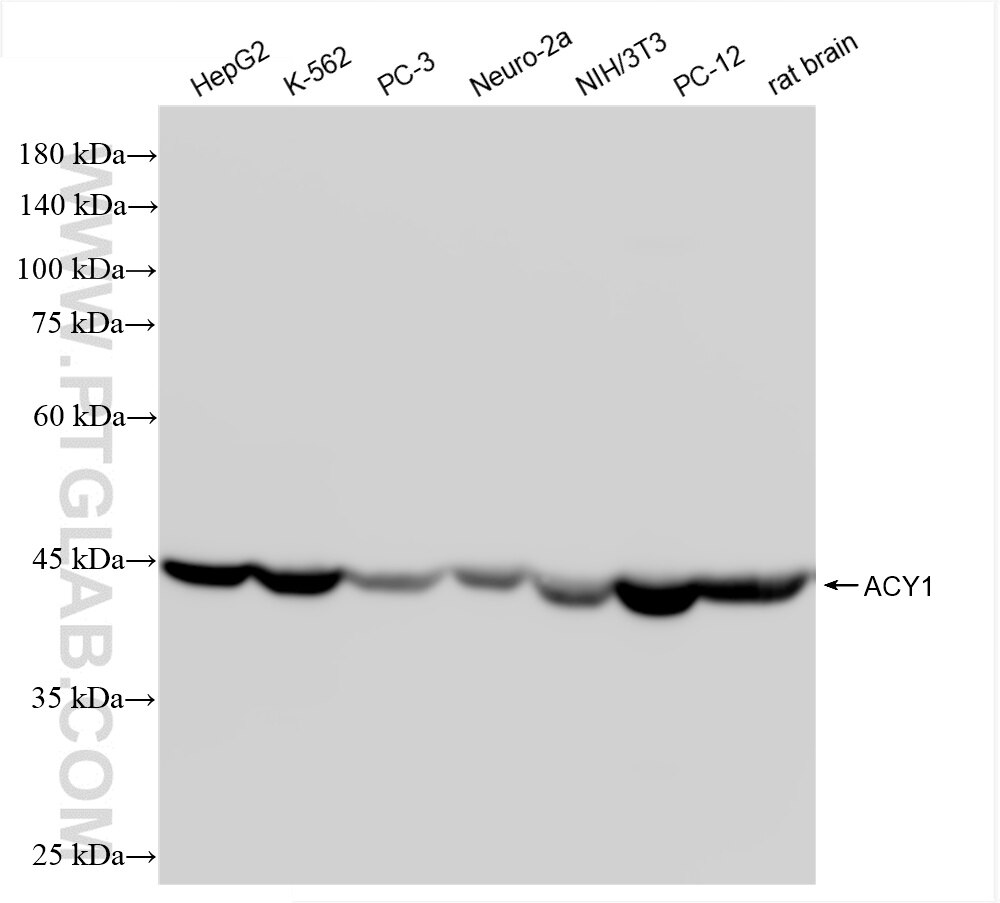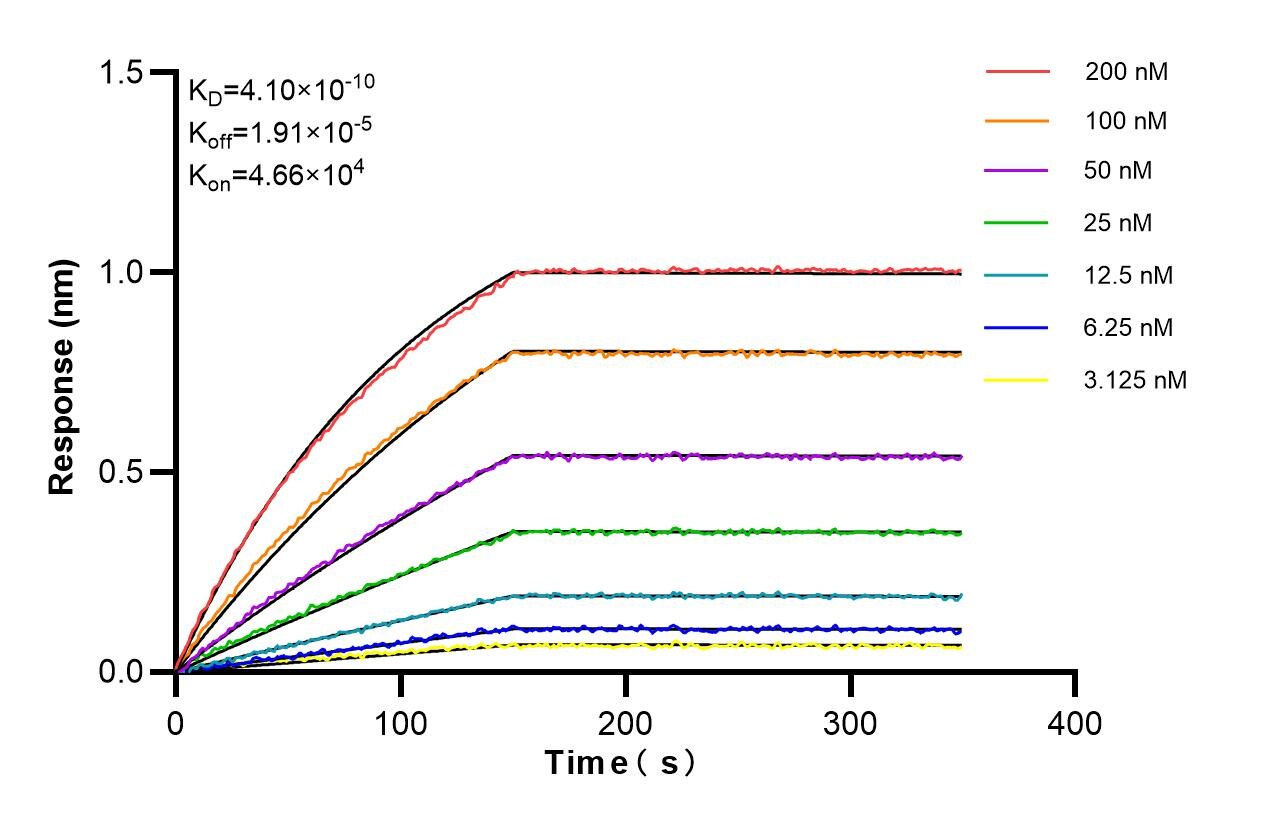Tested Applications
| Positive WB detected in | HepG2 cells, K-562 cells, PC-3 cells, Neuro-2a cells, NIH/3T3 cells, PC-12 cells, rat brain tissue |
Recommended dilution
| Application | Dilution |
|---|---|
| Western Blot (WB) | WB : 1:2000-1:10000 |
| It is recommended that this reagent should be titrated in each testing system to obtain optimal results. | |
| Sample-dependent, Check data in validation data gallery. | |
Product Information
86204-1-RR targets ACY1 in WB, ELISA applications and shows reactivity with human, mouse, rat samples.
| Tested Reactivity | human, mouse, rat |
| Host / Isotype | Rabbit / IgG |
| Class | Recombinant |
| Type | Antibody |
| Immunogen |
CatNo: Ag1813 Product name: Recombinant human ACY1 protein Source: e coli.-derived, PGEX-4T Tag: GST Domain: 109-408 aa of BC014112 Sequence: RGAQDMKCVSIQYLEAVRRLKVEGHRFPRTIHMTFVPDEEVGGHQGMELFVQRPEFHALRAGFALDEGIANPTDAFTVFYSERSPWWVRVTSTGRPGHASRFMEDTAAEKLHKVVNSILAFREKEWQRLQSNPHLKEGSVTSVNLTKLEGGVAYNVIPATMSASFDFRVAPDVDFKAFEEQLQSWCQAAGEGVTLEFAQKWMHPQVTPTDDSNPWWAAFSRVCKDMNLTLEPEIMPAATDNRYIRAVGVPALGFSPMNRTPVLLHDHDERLHEAVFLRGVDIYTRLLPALASVPALPSDS Predict reactive species |
| Full Name | aminoacylase 1 |
| Calculated Molecular Weight | 40.8 kDa |
| GenBank Accession Number | BC014112 |
| Gene Symbol | ACY1 |
| Gene ID (NCBI) | 95 |
| Conjugate | Unconjugated |
| Form | Liquid |
| Purification Method | Protein A purification |
| UNIPROT ID | Q03154 |
| Storage Buffer | PBS with 0.02% sodium azide and 50% glycerol, pH 7.3. |
| Storage Conditions | Store at -20°C. Stable for one year after shipment. Aliquoting is unnecessary for -20oC storage. 20ul sizes contain 0.1% BSA. |
Background Information
Aminoacylase 1 (ACY1) is a cytosolic enzyme that is widely distributed in mammalian tissues and catalyzes the hydrolysis of acylated amino acids into amino acids and acyl groups. The main functions of ACY1 are to accelerate the hydrolysis of N-acetylated peptides, especially N-acetylated neutral aliphatic amino acids, and participate in protein synthesis and turnover through the release of free amino acids.
Protocols
| Product Specific Protocols | |
|---|---|
| WB protocol for ACY1 antibody 86204-1-RR | Download protocol |
| Standard Protocols | |
|---|---|
| Click here to view our Standard Protocols |






